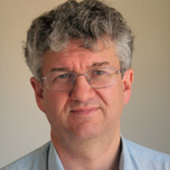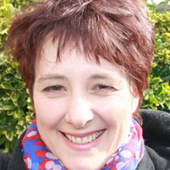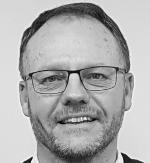Programme
-
Registration and networking
-
Opening remarks from the chairman
-
Legal update: understanding the changing environment for contaminated land risk assessment and remediation practices
- Detailing recent developments in the law relevant to land remediation including the contaminated land regime, waste and environmental permitting;
- Examining changes brought about by legislation, statutory guidance and caselaw; and
- Considering potential future changes, including as a result of Brexit.
-
The use of guided microwaves to detect and measure the thickness of Non Aqueous Phase Liquids (NAPL).
Measuring NAPL is notoriously difficult, with labour-intensive trips to site often delivering little more than poor repeatable results and threat of cross-contamination.
In this session, Geostream UK Technical Director, James Cartwright, will reveal how the company is tackling the problem, introducing its latest technological innovation: NAPLsense. Using guided microwaves, this continuous interface level meter measures the three parameters required for the control and monitoring of the free phase (LNAPL) floating inside a well.
James will demonstrate how this new technology is currently being applied on site and the level of data it can provide.
-
Environment Agency update: Outlining the implications of changes to waste management regulations for brownfield development projects
- Detailing changes to the landfill tax regime as of April 2018 and the implications of these for the disposal of materials;
- Examining the impact of these changes on the quality of materials used in development projects;
- How will the new guidance impact on existing DoWCoP and quality protocols for aggregate re-use in brownfield development;
- What are the likely cost and landfill tax liability implications of these changes?
-
Questions and answers
-
Morning refreshments and networking
-
NQMS for Land Contamination Management
- Understand the scope and structure of the National Quality Mark Scheme (NQMS);
- Understand the operation of the NQMS;
- Understanding of the requirements for becoming a Suitably QualifiedPerson (SQP) and the consequent responsibilities; and
- Be aware of the regulatory areas where NQMS might grow to cover
-
Helping developers and builders of small brownfield sites and contaminated land
Introducing CIRIA’s new Guidance ‘A guide to small brownfield site and land contamination’. Small sites can have difficulties with access, and space for storage of materials, vehicles and plant, and are particularly vulnerable to programme delays and unforeseen technical and engineering issues, which can threaten the viability of the project. CIRIA’s new industry guidance provides advice to help overcome the barriers and issues that can obstruct the development and management of small brownfield sites. It gives general guidance on the technical, financial and planning issues, with an emphasis on managing land contamination. As lead author, Hannah Fraser will provide an overview of the new guidance and how it can help you and your clients.
-
Integrated approach to contaminated land risk management and remediation for development of a large brownfield riverside site
The presentation will focus on the importance of investigation to understand the conceptual site model and associated environmental and geotechnical risks to enable design of practical remediation solutions which are integrated with the construction process to enable site development. It will also cover the importance of flexibility, team communication and Regulator liaison in achieving a successful outcome.
-
Questions and answers
-
Lunch and networking
-
Welcome back
- Collaboration and best practice
-
Hydrocarbon Plume Characterisation & Remediation in Densely Abstracted Chalk Aquifer
The presentation utilises a recent SEED Environmental case study example to outline the hydrogeological, regulatory and physical challenges that can be overcome to implement an effective and innovative remediation solution. The case study presentation outlines the importance of utilising fracture horizon flow identification techniques and a regular review of the conceptual model to ensure that a remediation solution can be successfully designed and delivered. The case study site is located within a Chalk aquifer with a high level of existing at-risk groundwater abstractions, no public foul or surface water options for discharge, and two remediation sites separated by third party land.
-
The Aberdeen Exhibition and Conference Centre
Following provision of details of potentially radioactive waste at the former Rowett Institute and animal nutrition laboratories in Aberdeen, Arup were commissioned to provide specialist contaminated land advice as an extension to our then existing contract for civil and structural services in respect of the development of a new exhibition and conference centre at the site which lies in close proximity to Aberdeen airport. A revised desk study and conceptual site model incorporating this additional information was undertaken, and phases of ground investigation and remediation were specified and undertaken by VertaseFLI utilising sonic drilling and a range of other health and safety control measures under a Radioactive Substances Act authorisation to accumulate and dispose of radioactive waste.
This presentation focuses on the collaborative approach adopted, the skills required and the liaison undertaken in order to ensure that all works achieved full regulatory sign off and did not impact on the demolition and earthworks programme for development of the exhibition and conference centre.
-
Intelligent integration of innovative geotechnical and environmental solutions allows development on a site impacted by galligu and petroleum hydrocarbons
The redevelopment of a former bus depot in the centre of Runcorn posed unique and complex challenges. Each step in the solution process would have a follow-on effect; therefore a well thought-out, integrated approach was crucial for the project’s success.
The site comprised a mound of industrial waste from the Leblanc process, including several metres of galligu above a black ash layer which was underlain by cohesive glacial till. Two geoenvironmental issues needed addressing:
1) Stability; galligu has a weak structure with a ‘toothpaste’ consistency in parts.
2) Petroleum hydrocarbon contamination; leaking underground storage tanks onsite had resulted in fuel infiltrating downwards, then moving offsite via the permeable ash layer. The downgradient boundary comprises a steep slope to the canal where the contaminated groundwater egressed at ground-level, polluting the adjacent canal.
An integrated solution was used: Soil/cement mixed panels were used to support development structures, with a soil/cement mixed mattress created under roadways. Installation of these panels altered the groundwater flow,raising and channelling towards the panel ‘wall’ at the boundary. Here the groundwater would funnel through gaps at a higher velocity and enter the offsite canal. An innovative Liquid Activated Carbon (LAC)substrate was therefore used to integrate with the panels. By injecting the LAC into the subsurface, an activated carbon filter was created within the channels in between the soil/cement walls. This barrier intercepted the contamination and prevented contaminant egress from the site, protecting the canal.
The combination of these in situ methods addressed geotechnical and environmental challenges to development of the site in a rapid and cost-effective manner, with no further maintenance or costs required. -
Questions and answers
-
Afternoon refreshments and networking
-
In-Situ Thermal Remediation in the UK and Mainland Europe: State of practice and technology innovations
Review of the range of in-situ thermal remediation (ISTR) technologies available and currently being implemented both in the UK and mainland Europe. This presentation offers a high level view of the ways in which each technology works, their relative “sweet spots” as well as situations in which they are either not suitable or where the technologies overlap or can complement each other simultaneously. In addition, the presentation will cover some of the beneficial side effects the heat generates for plume attenuation and some ways the remediation strategy can combine technologies as well as leverage these effects to reduce the cost of the source zone remediation. Finally, we address the perception of high cost relative to other solutions and objective/end goals and consider the growth in in-situ thermal remediation activities across Europe.
-
Managing the risk of mining legacy for 21st century development
Around a quarter of properties in Britain are located on the coalfield, with approximately 1.5 million properties situated above coal mine workings which are less than 30m deep.
The Coal Authority is a statutory consultee on planning applications in England, Scotland and Wales and considers that mining legacy features can pose a significant risk to development activities – the Coal Authority manages around 1,000 safety and subsidence projects each year, many relating to properties which have been affected by nearby coal mine workings or mine entries. However, with the need to address the UK’s housing demand, increasing numbers of sites containing mining legacy features are now being considered for development.
A coal mining risk assessment should be produced for coal field developments, drawing on available historical and site-based sources including (but not limited to) abandonment plans, geological plans, historical borehole logs and mining reports. This assessment should clarify the risk posed to a future development from mining legacy, namely mine entries, recorded or probable mine workings, coal mining hazards, opencast workings, mine gas or geological discontinuities (faults and fissures). If required, a suitable scheme of site investigation should be proposed and a remediation strategy designed, utilising the investigation findings.
Any works to intersect or disturb Coal Authority property, including coal seams, workings and mine entries, requires prior approval of the Coal Authority. These works should be undertaken in a manner which addresses the risks of intersecting mining features, including the monitoring of mine gases and the use of appropriate flushing mediums. Investigations should aim to make an accurate assessment of on site features by ensuring that any boreholes or excavations are appropriately distributed and extend to an adequate depth.
The challenges posed by developing on the coalfield can be both complex and costly, requiring thorough consideration from geologists and engineers. However, through the undertaking of a detailed desk study (which considers the risks both during and after site works) and through engineering and layout solutions, many coalfield sites which may otherwise be disregarded could now be considered suitable for development. -
Questions and answers
-
Closing remarks from the chairman














